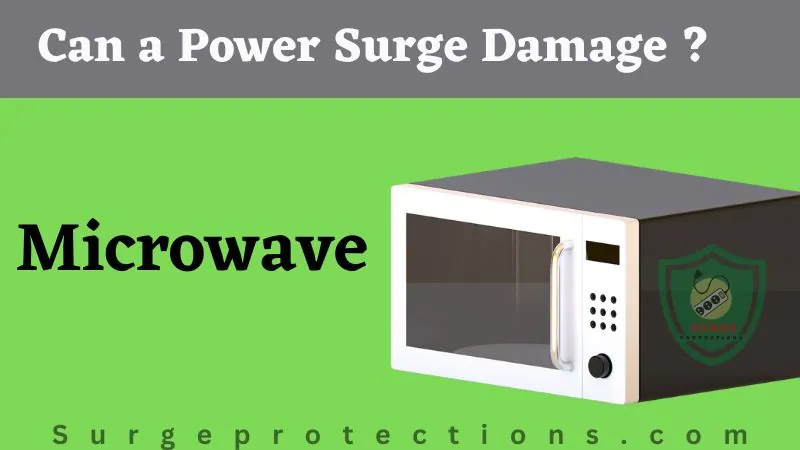A power surge is an unexpected, sudden increase in the electrical current flowing through a circuit, typically caused by lightning strikes, downed power lines, or switching operations. These surges can cause significant damage to electronic devices and appliances, including microwaves.
Microwaves are designed to run on a specific amount of power, and any surge in the electrical current can potentially damage the electronic components that control the microwave’s operations. The impact of a power surge on a microwave depends on the magnitude and duration of the surge. A small surge may cause a momentary flicker of the microwave’s display, while a more significant surge may cause more significant damage to the microwave.
How Power surge damage a Microwave?
The electronic components that control a microwave’s operation are particularly susceptible to damage from power surges. The control board, which is responsible for managing the microwave’s power and timing, is especially vulnerable. A power surge can cause the control board to malfunction or fail completely, resulting in the microwave not working at all.
The magnetron is another component that can be damaged by a power surge. The magnetron is the device that generates the microwaves that heat the food in the microwave. It is a sensitive component that requires precise control of the electrical current to function correctly. A power surge can damage the magnetron, causing it to malfunction or fail entirely.
In addition to the electronic components, power surges can also damage the physical structure of the microwave.
How to protect the microwave from power surge?
Preventing power surges from damaging your microwave is essential. The best way to do this is by using surge protectors. A surge protector is an electrical device designed to protect electronic equipment from power surges by regulating the electrical current. When a surge occurs, the protector diverts the excess voltage away from the connected devices and into the ground, preventing the surge from reaching the microwave.
Another way to protect your microwave from power surges is to unplug it during storms or other times when a surge is likely to occur. This may seem inconvenient, but it is an effective way to prevent damage to your microwave and other electronic devices in your home. If you don’t want to unplug your microwave, consider installing a whole-house surge protector, which will protect all of your home’s electrical devices from power surges.
Can a Microwave be Fixed after a Power Surge?
Whether or not a microwave can be fixed after a power surge will depend on the extent of the damage. If the damage is minor, such as a blown fuse or a damaged power cord, it can be fixed relatively easily. However, if the damage is more severe, such as a damaged magnetron or control panel, it may be more difficult and costly to repair.
If your microwave has been damaged by a power surge, it is important to have it inspected by a qualified technician. They will be able to diagnose the problem and provide you with an estimate of the repair costs. If the repair costs are too high, it may be more cost-effective to replace the microwave.
What Kind of Surge Protector Do You Need for a Microwave?
When it comes to protecting your microwave from power surges, it is important to use a surge protector that is designed for use with appliances. A surge protector for a microwave should have a minimum rating of 600 joules and be capable of handling a current of at least 15 amps.
It is also important to look for a surge protector that has a high clamping voltage. This will help to ensure that the surge protector will activate before the voltage level gets too high and damage occurs.
Conclusion:
In conclusion, power surges can damage microwaves, and the extent of the damage will depend on the severity of the surge. If your microwave has been damaged by a power surge, it is important to have it inspected by a qualified technician. Additionally, to prevent power surges from damaging your microwave, it is important to use a surge protector that is designed for use with appliances and has a high clamping voltage. By taking these precautions, you can help to ensure that your microwave will continue to work properly and safely for years to come.
